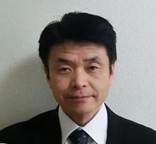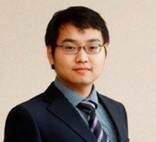6th Forum of Energy and Power——Fuel Cell Technology and Industry Frontier Workshop
Time: 8:30am, Nov. 9th, 2018 (Friday)
Site: A-559, Lee Shau Kee Building of Science and Technology
Inviter: Prof. Minfang Han(韩敏芳 教授)
Report titles:
1) Fuel Cells International Progress
2) Poisoning Mechanism of SOFC Cathodes
3) Probing and Tuning Oxygen Incorporation Reaction on Electrochemical Solid-Gas Interfaces using Synchrotron-based Characterization Techniques
Reporters:
1) Dr. Kevin Kendall FRS (Fellow of the Royal Society)
Adelan Ltd/University of Birmingham, UK
2) Dr. Teruhisa Horita
National Institute of Advanced Industrial Science and Technology (AIST), Japan
3) Dr. Di Chen
Department of Materials Science and Engineering, Stanford University, USA



Dr. Kevin Kendall FRS Dr. Teruhisa Horita Dr. Di Chen
Abstracts:
1) Both Solid Oxide Fuel Cells (SOFCs) and Polymer Electrolyte Membrane Fuel Cells (PEMFCs) have been advancing rapidly worldwide during the last 5 years. The objective of this paper is to describe the main ideas and demonstrations, pointing the pathway to the future.
Asia is leading the world in fuel cells at present, with Japan in front, Korea and China catching up, USA competing and EU far behind. The USA has emphasised large scale Combined Heat and Power (CHP), especially in California where Bloom Energy, now worth $1billion, has been most active delivering hundreds of 250kWe ‘energy server containers’. Japan is ahead in PEMFC car sales from Toyota and Honda, with 100 hydrogen refuelling stations operating in 2018. China has overtaken the EU this year with PEMFC buses and shows a trend towards thousands of Ballard buses by 2020.
The key areas are outlined, illustrating the need for more SOFCs in China to compete with the expanding PEMFC initiatives by major companies. In future, it is likely that SOFCs will be integrated with renewable energy sources in Chinese homes, providing high efficiency plus hot water and saving 1ton of Carbon per home. These will improve air quality in cities as also will battery electric vehicles hybridised with PEMFCs to give rapid filling plus long range, with China leading the world by 2025.
2) Chromium (Cr) poisoning is one of the critical degradation issues to commercialize the durable and long-term stable SOFC systems. So far, Cr-poisoning mechanisms are the electrochemical induced Cr-vapor reduction and chemical reaction around the cathode/electrolyte interfaces. Especially at the (La,Sr)(Co,Fe)O3/CeO2/ZrO2 interfaces, a significant amount of SrCrO4 is formed at the grain surfaces or triple phase boundaries which affects the reaction rates for oxygen reduction as well as O2- diffusion rates inside the (La,Sr)(Co,Fe)O3 due to loss of oxygen vacancies. However, in some cases, we found that the surface diffusion of elements caused the evaporation of surface SrCrO4 and formation of LaCrO3 compounds. The rearranged LaCrO3 possess a perovskite oxide structure and it conducts the electron as well as small amounts of oxide ion (O2-). The cathode poisoning has a strong correlation with the Sr diffusion through the CeO2 interlayer and the formation of SrZrO3 at the CeO2/ZrO2 interfaces. In this presentation, Cr-poisoning mechanisms are summarized and reviewed. Also, the recovery of Cr poisoning is proposed.
3) The oxygen incorporation reaction on solid-gas interfaces is ubiquitous and fundamental in solid-state electrochemistry, and the central reaction for many energy and environmental related applications, such as solid oxide fuel cells (SOFCs) and solid oxide electrolysis cells (SOECs). The synchrotron-based characterization techniques are very powerful techniques to study this reaction because they can probe the solid-gas interface at the working condition of SOFCs and SOECs (high temperature, ambient pressure and under bias). In this talk, I will present three case studies: (1) We studied the correlation between strain and surface exchange kinetics, using our newly developed time resolved ambient pressure XPS and ultra-thin (~2 nm) atomically flat ceria films. (2) We demonstrated how the chemistry and structure of the top two atomic layers of the electrode materials (doped ceria and LSF) can impact the surface redox activity by orders of magnitudes. (3) Using (La0.5Sr0.5)FeO3-δ as the model system, we deconvoluted the gas impurity effect and demonstrated that water vapor rather than CO2 or SOx is the primary culprit of surface degradation, and find that water will form hydroxyl/oxygen which facilitates the strontium segregation to the LSF55 surface. We then fabricated a trilayer structure which can improve the stability up to one order of magnitude.
Brief Biography:
1) Dr. Kevin Kendall FRS
Dr. Kevin Kendall is in the British Academy, elected Fellow of the Royal Society in 1993.
Kevin Kendall has studied fuel cells for 40 years, publishing 3 books and hundreds of papers. His main interest has been SOFCs. He invented the microtubular SOFC in 1994, demonstrating that rapid start-up could be achieved in less than one minute. Eight companies have been busy commercialising this invention for use in portable power supplies, especially combined heat and power (CHP) integrating with solar and battery components.
He started hydrogen fuel cell activities in Birmingham as Professor at the University in 2000. By 2008 Dr. Kendall had installed the first hydrogen station at the University of Birmingham, with 5 hydrogen fuel cell cars running on campus. He initiated the EU SWARM project in 2011, leading to the installation of the Birmingham hydrogen station with 20 PEMFC buses delivered this year.
In 2009, Dr. Kendall was awarded the largest hydrogen fuel cell training project in the UK, supporting 100 Ph.D. students at Birmingham University, plus cooperation with Nottingham and Loughborough Universities. This project has continued through 2018 and remains the largest Doctoral Training Centre for Hydrogen Fuel Cells in the UK.
In 2015, Dr. Kendall started a project with industry in China to clean up cities. Asia is ahead in both SOFC and PEMFCs. His aim is to promote collaboration by working 50% in China and making contacts between interested players.
2) Dr. Teruhisa Horita
Academic Degrees Obtained
March/1990: B.A. of Science, Waseda University, Tokyo, Japan
March/1992: M.A. of Engineering, Waseda University, Tokyo, Japan
March/1998: Ph.D. (Engineering), Waseda University
Research Stay Outside of Japan
November/1998 – January/2000
Alexander von Humboldt Foundation Research Fellow, Germany
Research work at Institut für Werkstoffee der Elektrotechnik (IWE), Universit?t Karlsruhe (TH), Karlsruhe, Germany (Cooperation with Prof. E. Ivers-Tiffée)
Complete Professional Background
April/1992-March/2001: Research Scientist, National Institute of Materials and Chemical Research (NIMC)
October/2000: Senior research scientist
April 2002-March 2012: Associate professor of Graduate School in Kagoshima University
April 2008-May 2013: Group Leader, Fuel Cell Materials Group
June 2013-May 2015: Industrial Science and Technology Investigator at Ministry of Economy, Trade and Industry (METI)
June 2015-March 2018: Principal Research Manager, Research Institute of Energy Conservation, AIST
April 2018-present: Deputy Director, Research Institute of Energy Conservation, AIST
3) Dr. Di Chen
Dr. Di Chen obtained his B.S. from Tsinghua University in 2008 and PhD. from MIT in 2014, both from the Department of Materials Science and Engineering. After working in industry for 2 years, he joined Prof. William Chueh’s group in Stanford University as a postdoc in 2016. He is working on developing operando characterization techniques for electrochemical reaction on gas/solid interface, based on synchrotron light source.
During his postdoc in Stanford University, Dr. Di Chen develops advanced characterization techniques (on Synchrotron) to study the fuel cell and battery reaction at the working condition. Dr. Di Chen also develops techniques to synthesis and characterize the top atomic surface of energy materials, to understand the structure-property relationship at atomic scale. He leads 4 research projects, mentored one master student and one high school students. Resulting 5 papers (published or submitted) and 2 invited talks.